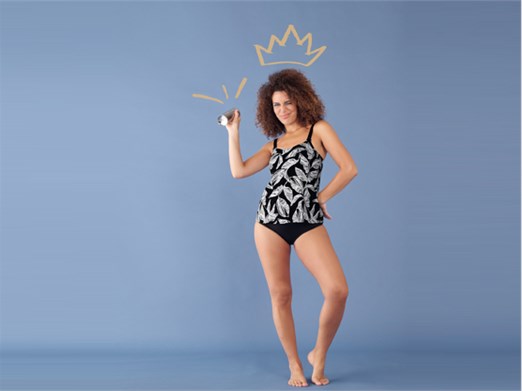Easing Breast Cancer Side Effects with Exercise
You have made it through your breast cancer treatment – however, breast surgery and chemotherapy can sometime have unpleasant side effects. Let’s talk about which activities can help alleviate which symptoms.
SECONDARY LYMPHOEDEMA

What is it?
A painful swelling of connective tissue. It develops when lymph fluid clogs up in tissue and in the spaces in between tissue. Lymphoedema in the arm often occurs when lymph nodes have been removed as part of a mastectomy. However, through more careful surgical procedures, the risk of lymphoedema has significantly decreased.
What can help?
- Water sports such as swimming and water aerobics: Water pressure and muscle contraction put gentle pressure on the tissue and encourage the movement of lymph fluid.
- Moderate weight training on machines, horseback riding or Nordic walking: The forward and backward movement of your arms allows the muscles to contract and encourages lymph fluid to flow.
NEUROPATHY

What is it?
A malfunction of the peripheral nervous system that often occurs in breast cancer patients after chemotherapy, usually in your hands and feet. You may experience tingling and numbness in the affected areas.
What can help?
Vibrations that stimulate the depleted myelin layer of the nerves and promote its regeneration.
- For feet: Vibration technology (like the Power Plate), sensory motor training (such as balance exercises on sand and standing on uneven ground), certain yoga and Pilates exercises (if your foot starts to shake when standing on one leg, for example).
- For hands: Vibration plates, fine-motor exercises such as drumming, playing the guitar or piano, or simple activities like grasping (such as the sorting of small objects).
ARTHRALGIA

What is it?
Joint pain. This is often a side effect of hormone therapy in breast cancer patients.
What can help?
Intensive weight training that builds muscle, and/or intensive movement — such as jogging — often helps. As yet, it is not known why.
LIMITED MOBILITY

What is it?
After a mastectomy, long-term limited mobility may occur. Feelings of tension and pain then often lead to poor posture, which reduces muscle strength and results in muscular imbalance.
What can help?
A combination of moderate weight training and stretching exercises, often on machines or with resistance bands. As muscles are strengthened and the affected areas stretched, your mobility will increase and posture will improve.
FATIGUE

What is it?
Profound exhaustion and chronic tiredness, frequently caused by chemotherapy
What can help?
Basically any type of body movement — from gardening to jogging and weight training. It’s also good to know that when treating fatigue, the most important thing is not the type of movement, but the intensity. The rule of thumb: the greater your degree of exhaustion, the lower the intensity of your training should be.
Which physical activity will benefit you most also depends on the phase of treatment you are in at the time and how it is affecting your body. You should therefore always consult your doctor before beginning any exercise plan.
This article has been developed in collaboration with sports scientist Freerk Baumann from the Cancer Center in Cologne (CIO Köln Bonn), Germany.








